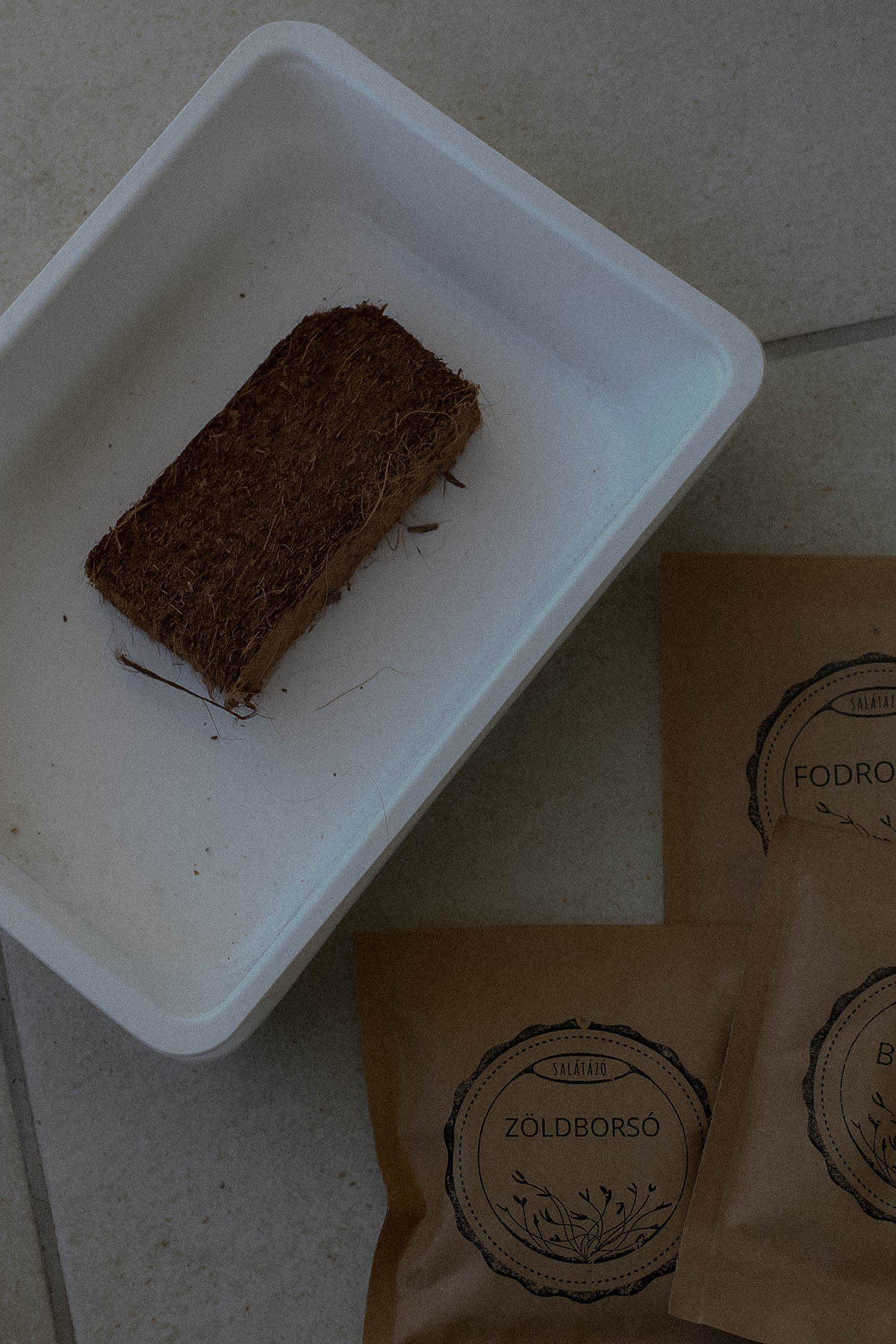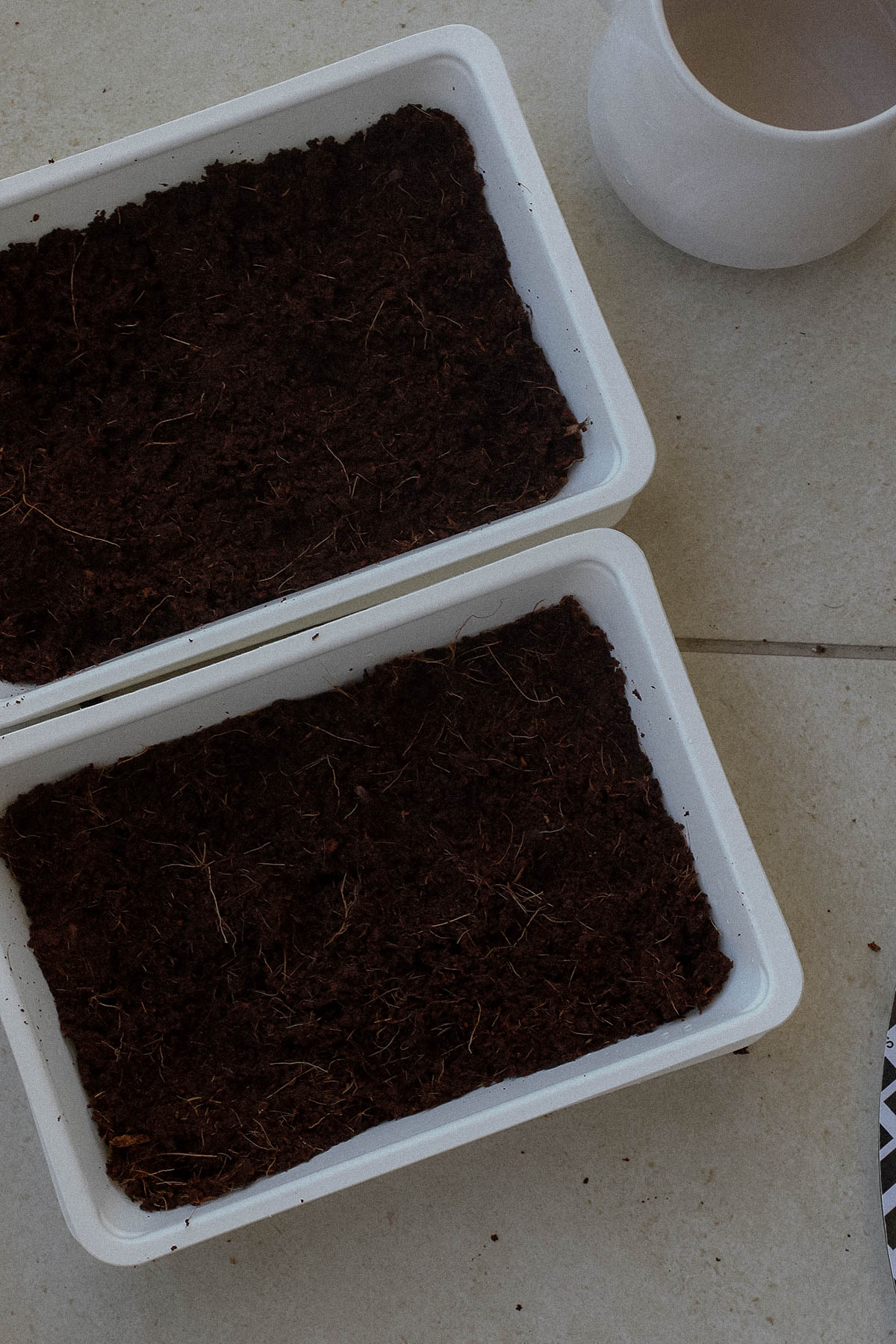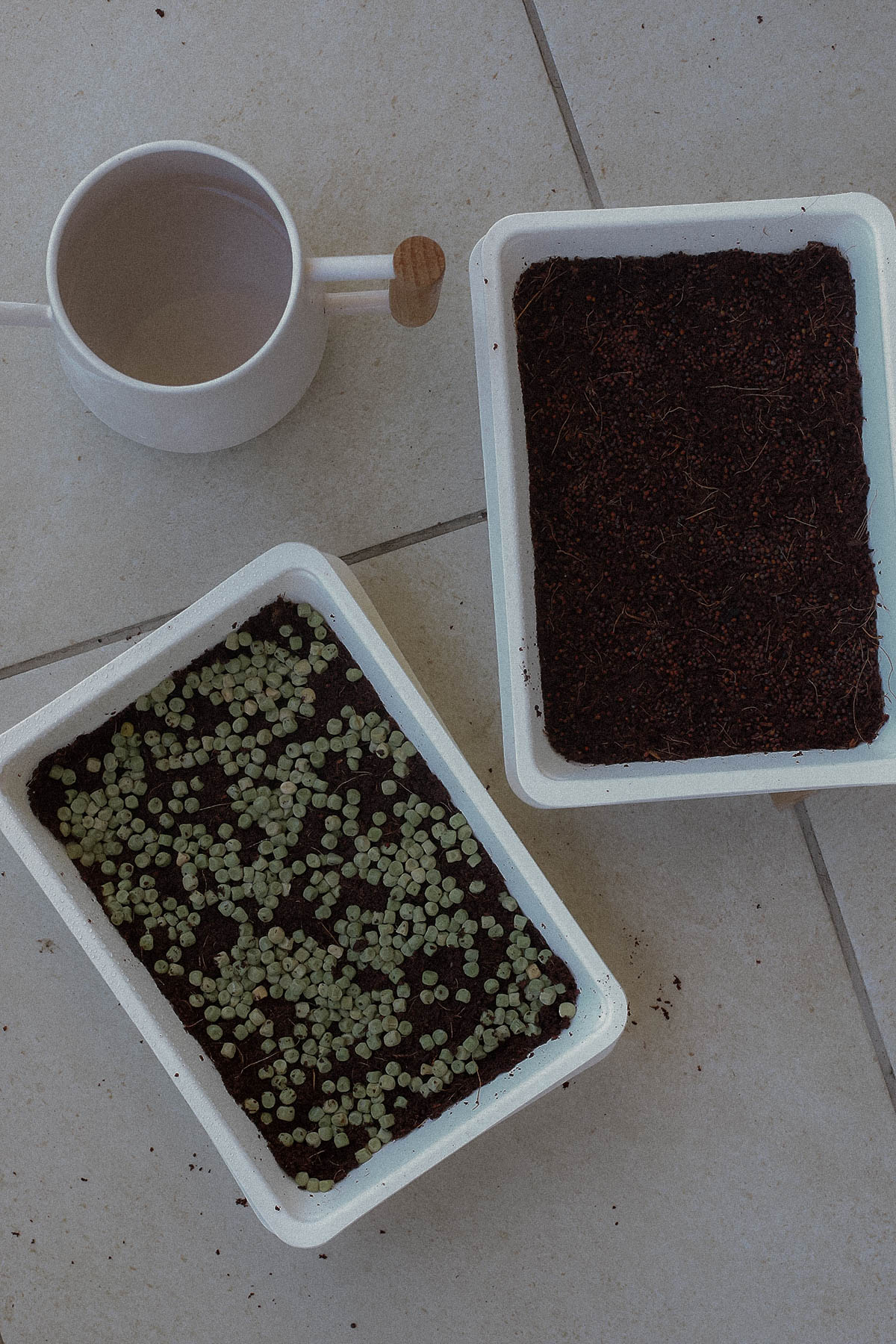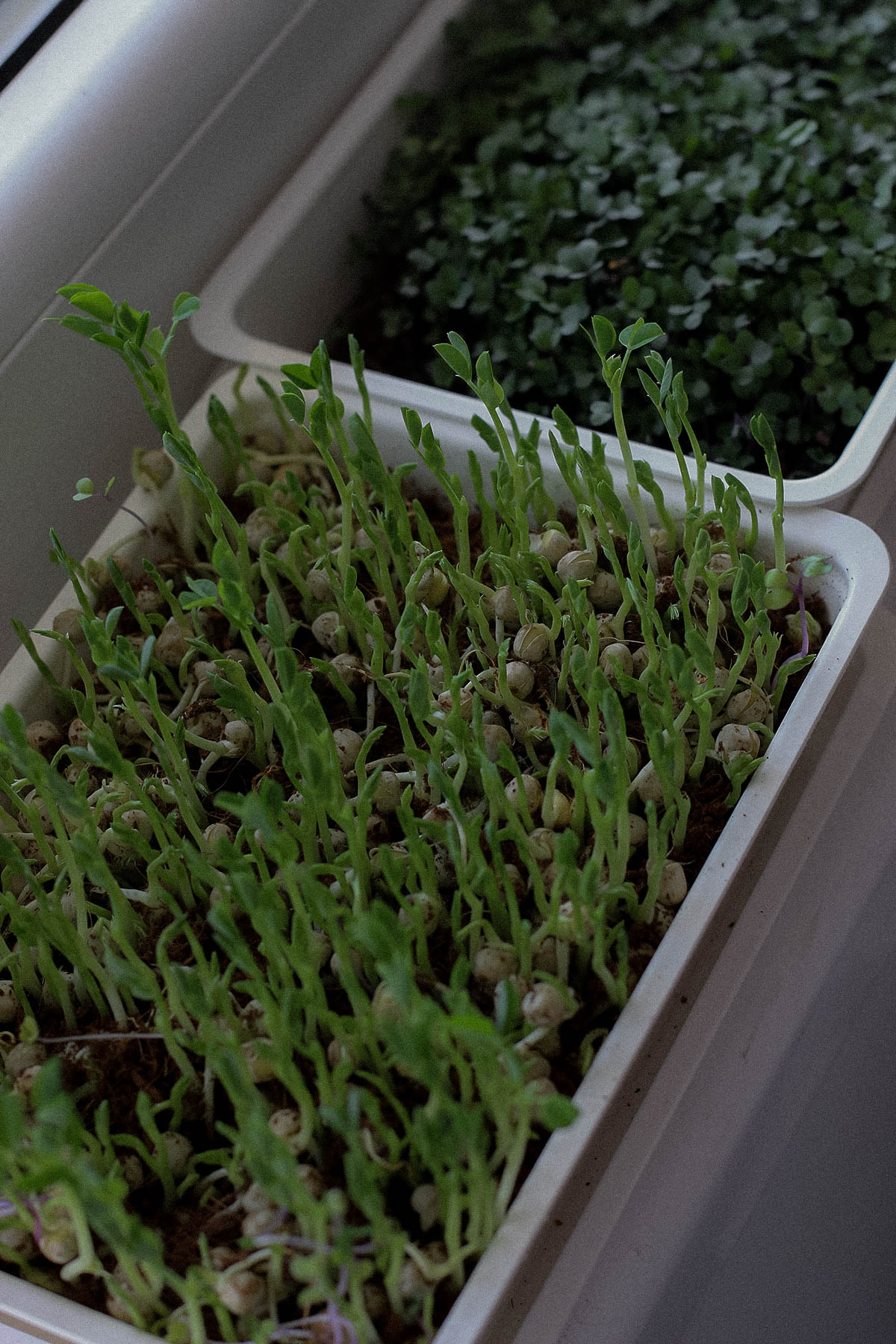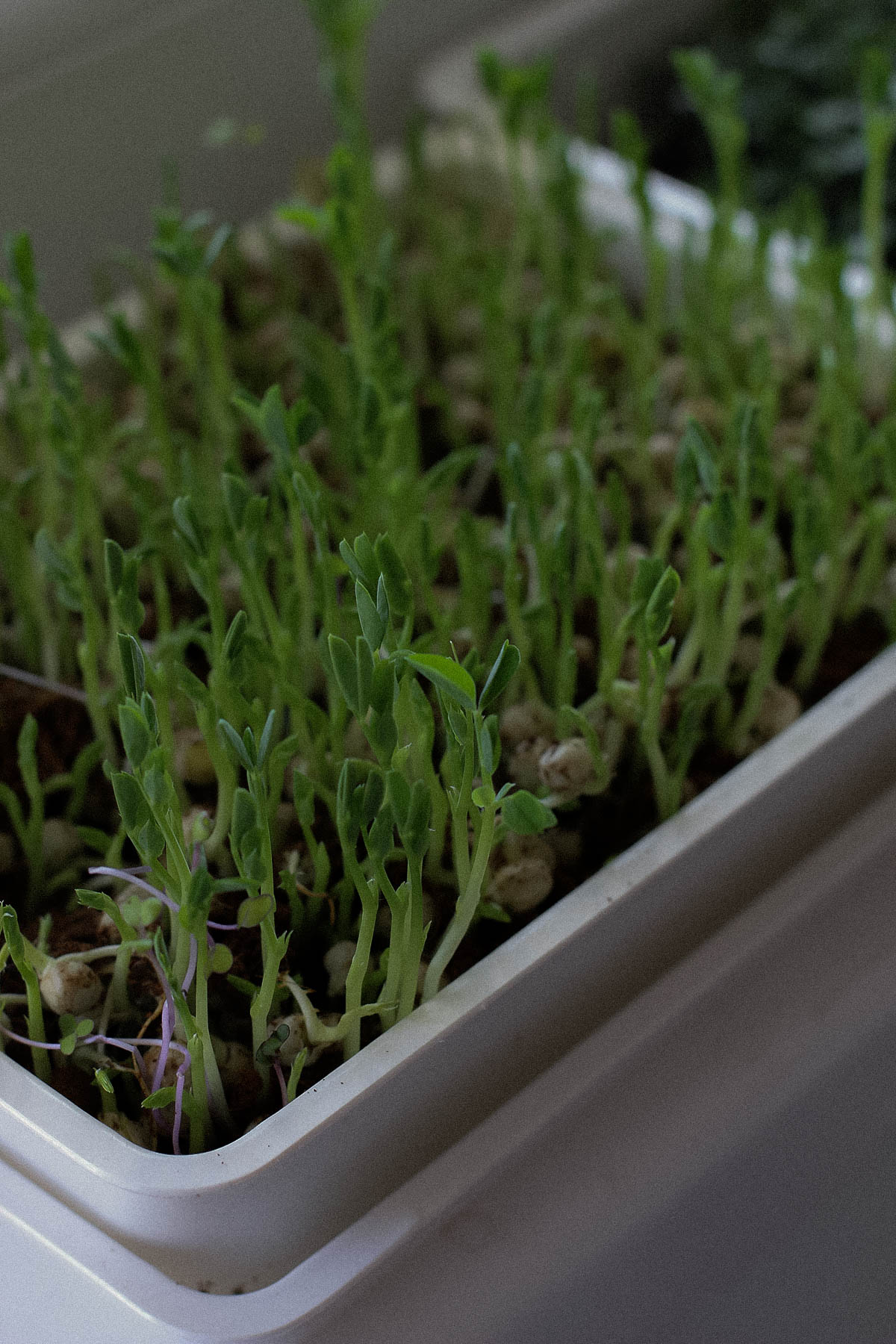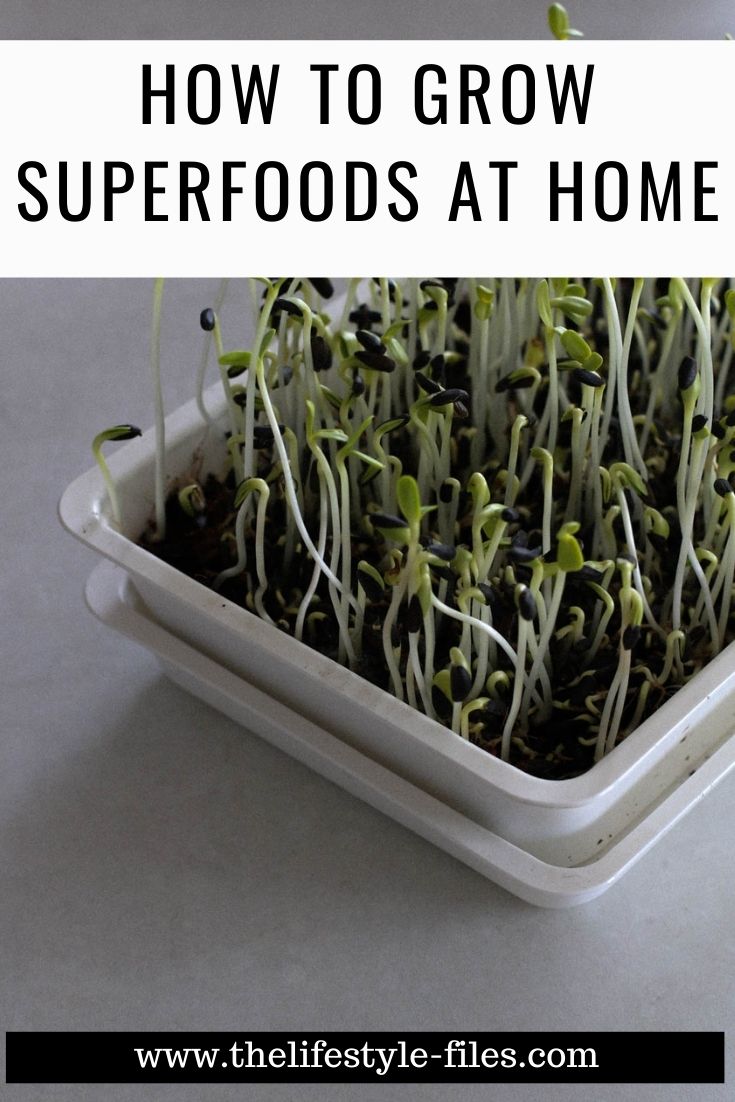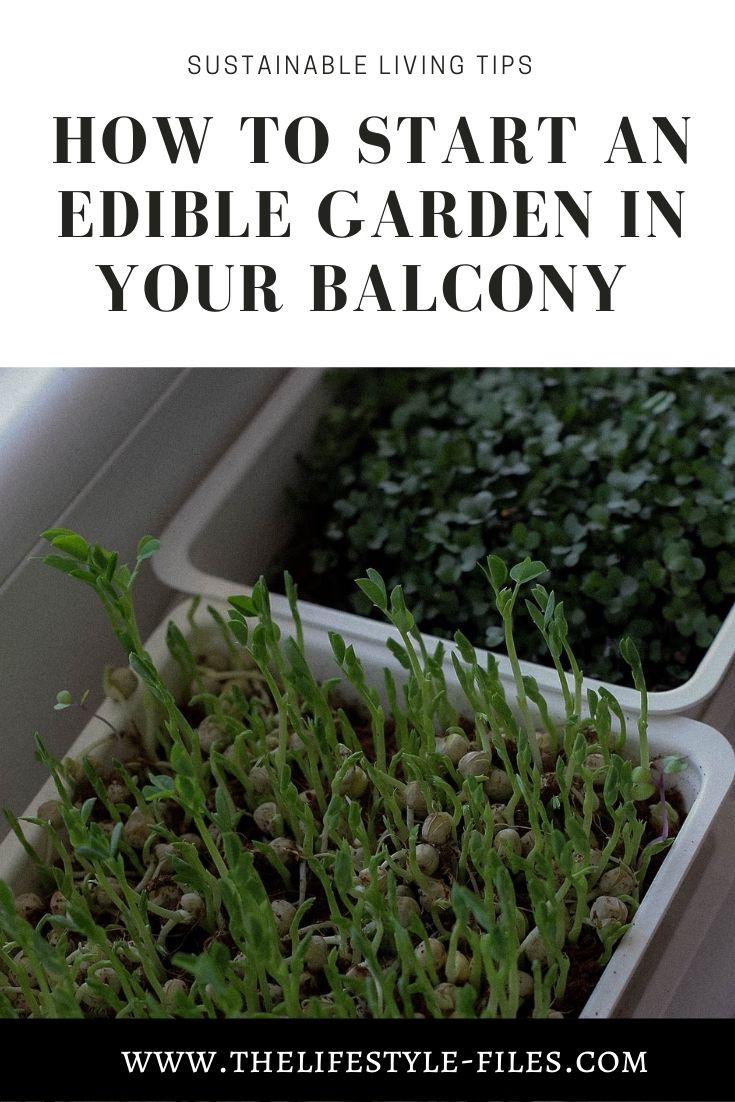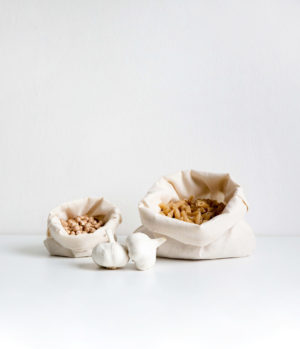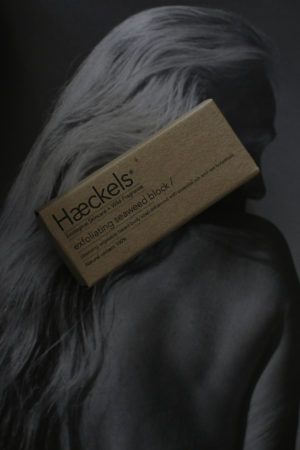There’s one issue that I’ve been really interested in lately – and that is sustainable food production.
Now, in the name of total honesty and transparency, I must admit that I have practically zero knowledge on this topic. I have an arts degree, the last class I took on plant biology was in high school (very much not in the near past), and I’m a true city girl, who basically only sees crops and cows when we’re passing them by car on a road trip.
But the more I learned about sustainability, the more I’ve realized the question of food production will be one of the major issues if we wanna slow down the climate crisis. In environmentalist circles, this is a known fact for a long time, but I feel like it doesn’t get as much attention in general discussion as fast fashion, plastic pollution, or zero waste initiatives for example. Maybe it’s because most of us have limited knowledge, don’t work in the field or it seems too dry or scientific, I don’t know. But it’d be critical to start paying attention because our future could depend on it.
Here are just a couple of major concerns:
- Food accounts for over a quarter (26%) of global greenhouse gas emissions
- Half of the world’s habitable land is used for agriculture and that land is quickly getting depleted due to monocrop farming and the excess use of pesticides
- 70% of global freshwater withdrawals are used for agriculture
- Agriculture, including fisheries, is the single largest driver of biodiversity loss
- 30-40% of all food produced are wasted at various steps of the food cycle (from production to household use)
- Price volatility, access restrictions, and the interconnectedness of global commodity markets, as well as the increasing vulnerability of food production systems to climate change and loss of agro-biodiversity, will make food even more inaccessible for the poor in the future
Sources: Our World in Data, European Commission, UN Sustainable Development
Maybe one societal factor for this disinterest stems from the fact that we have zero connection with food production and agriculture. Back in the day, people ate what they grew. Now, we eat what we buy at the supermarket. We have no idea where they come from, how they were grown, what they were treated with, what the animals ate, etc.
I’m not really sure what came first – my interest in sustainable food production or the idea of trying to create some kind of an edible garden at home (I live in an apartment with two balconies on the 3rd floor). I know I came across some articles that showed people growing tiny but lush edible gardens in apartment complexes on the 5th floor and it really fascinated me. They produced tomatoes, peppers, zucchinis, lettuce, and a bunch of other vegetables on incredibly small urban areas on a scale that they barely had to go to a market anymore. I was intrigued and wanted to see whether I could do something similar (albeit less ambitious).
Now, this is not the post that will show my own edible garden –that’s really far in the future, to be honest, I’m not sure I’m gonna ever get there (though I did proudly show off my very first zucchini flower on my Instagram a few weeks ago). But I’ve made the first tiny steps and so far I am having fun with growing things. I also have way more respect for farmers than I used to, the work they are doing is incredibly difficult.
So, if you’re interested, I really recommend trying to create your very own tiny garden at home. The simplest way is starting with herbs. You cannot really go wrong with herbs. If you’re adventurous, you can grow them from seed, but it’s easier to just buy a bunch of herb plants and try to just keep them alive. They are also very satisfying as you can continuously use them in your kitchen – in juices, salads, bowls, or as a seasoning in dishes. I currently have different types of mints (Moroccan is best), basils (try the Greek or red basil), oregano, thyme, rosemary, parsley, dill, sage on my balcony.
The other beginner step towards an edible garden is growing microgreens.
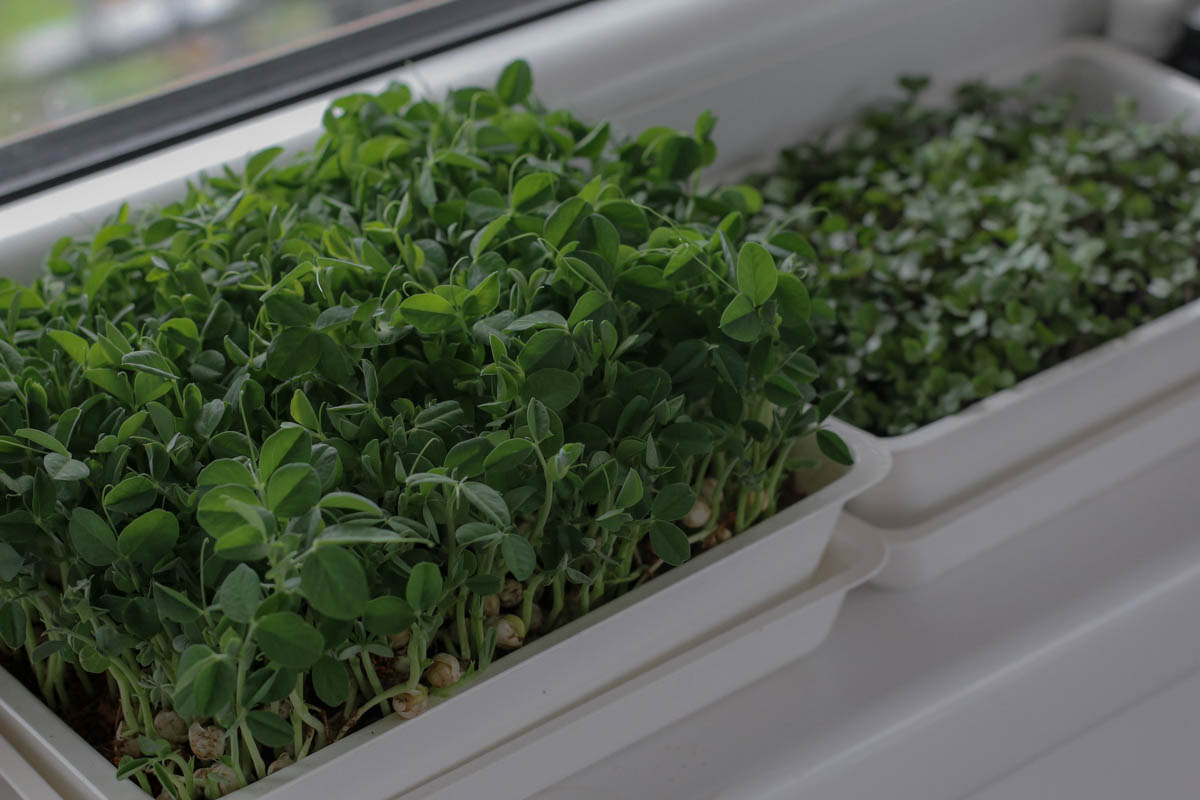
The beginner gardener’s guide to microgreens
What are microgreens
Microgreens are basically baby vegetable greens. They are really healthy as they are jam-packed with vitamins, minerals, and antioxidants – they often contain higher nutrient levels than their grown versions (like sprouts). Their taste varies but usually, it’s surprisingly similar to the taste of the grown vegetable, just a bit fresher. There are a lot of types to choose from: kale, peas, mustard, sunflower, red cabbage, arugula, spinach, radish, broccoli, just to name a few.
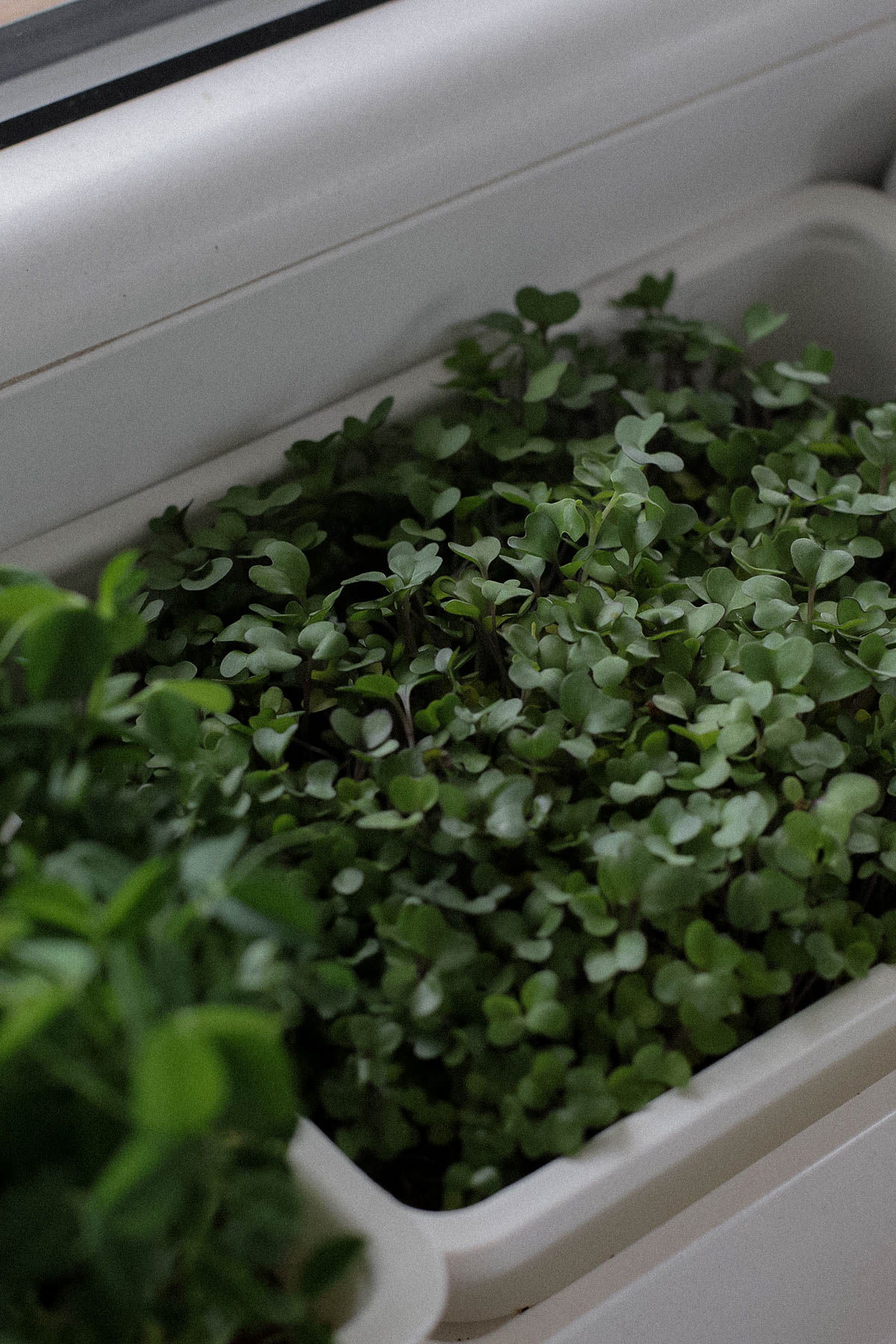
Microgreens are really easy to grow – perfect for people with limited space, time, or skills. You’ll need:
- Some kind of soil – I use coconut coir
- Microgreens seeds – it’s important to buy organic versions so they are not treated with pesticides or fungicides
- A tray – you can usually buy it in a kit with microgreens seeds + soil, and it can be reused later, but you can also use random trays, pots, even yogurt containers. The tray/pot must have holes in the bottom, so you can water it from below.
- Water spritzer
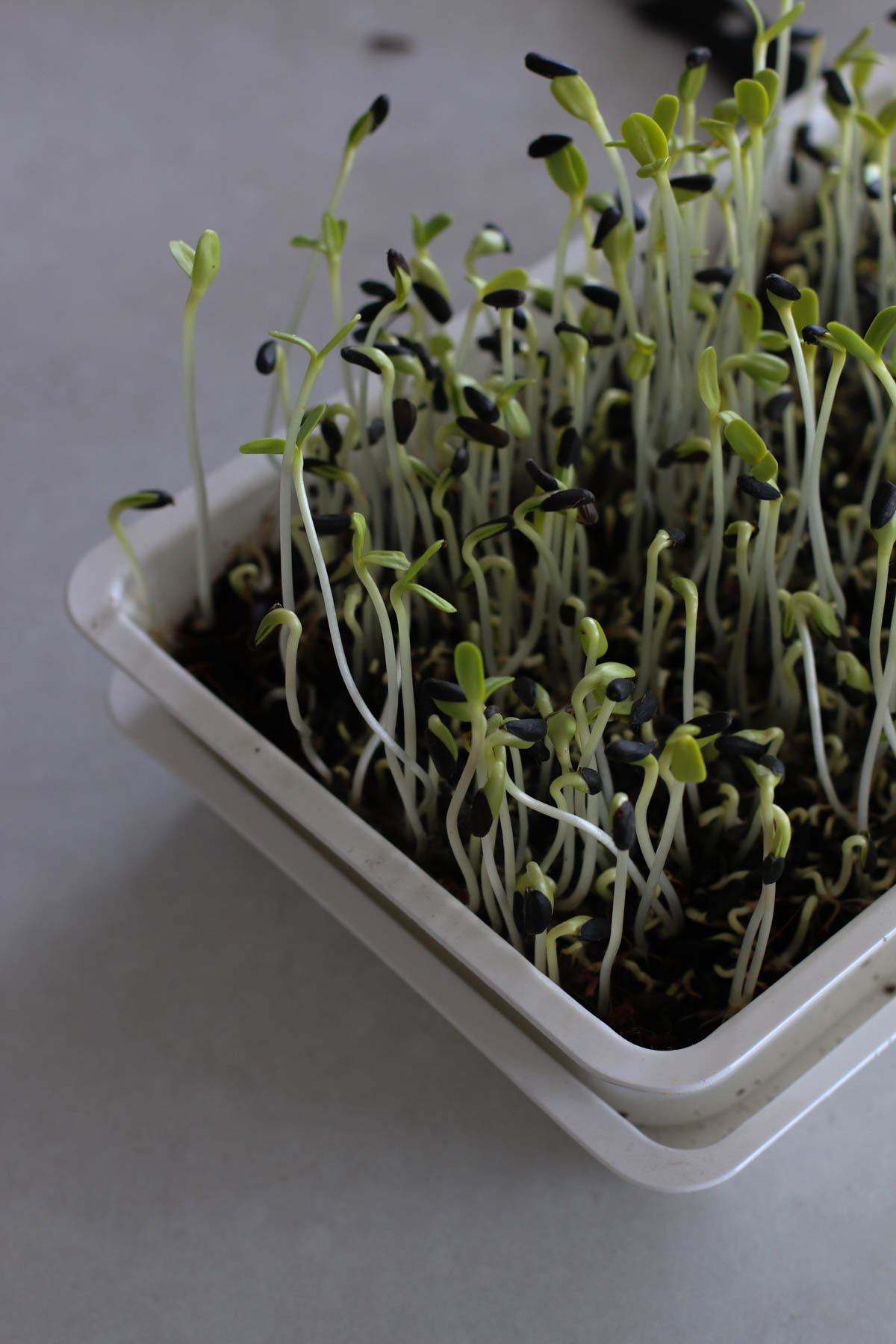
- Put the coconut coir in the tray and add water. It’s my favorite part and it’s so fun to watch. The dry coconut coir cube will immediately absorb all the water and transform into proper soil.
- Add seeds evenly. If you plant bigger seeds, like peas, you may need to cover it with a thin layer of soil as well.
- Cover the tray with something (like another tray or piece of paper) and put it in a dark place.
- Spritz the seeds two times a day and put the cover back immediately. You need to do this until the seeds sprout (in 3-4 days).
- Once they have sprouted, you can put the microgreens tray on a sunny spot. From now on, you shouldn’t spritz them anymore but water them through the tray.
- The microgreens will turn green in a day or so and will be fully grown in 6-7 days in general (maybe more/less depending on the type). You’ll know they are ready when they have developed tiny but full leaves.
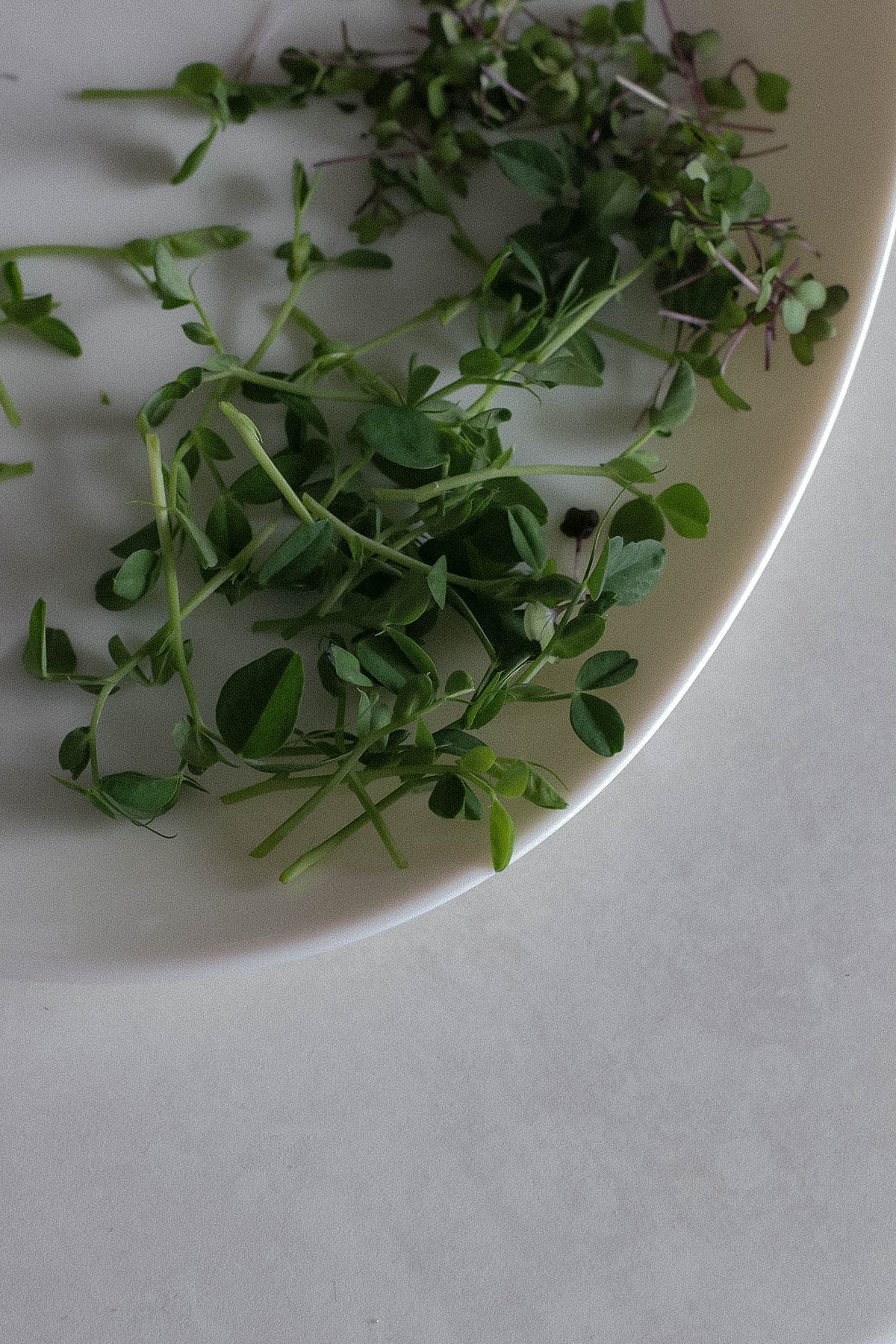
How to eat microgreens
Basically – however, you like. I like putting them on salads, scrambled eggs, pasta, or even buttered bread. My favorite so far is definitely the green peas, that one has one of the most intense flavors.
Hope this intrigued you a bit – I personally love my microgreens. They are fun to grow, tasty, healthy, and growing them will make you feel a bit more connected to nature even in the middle of the city.

